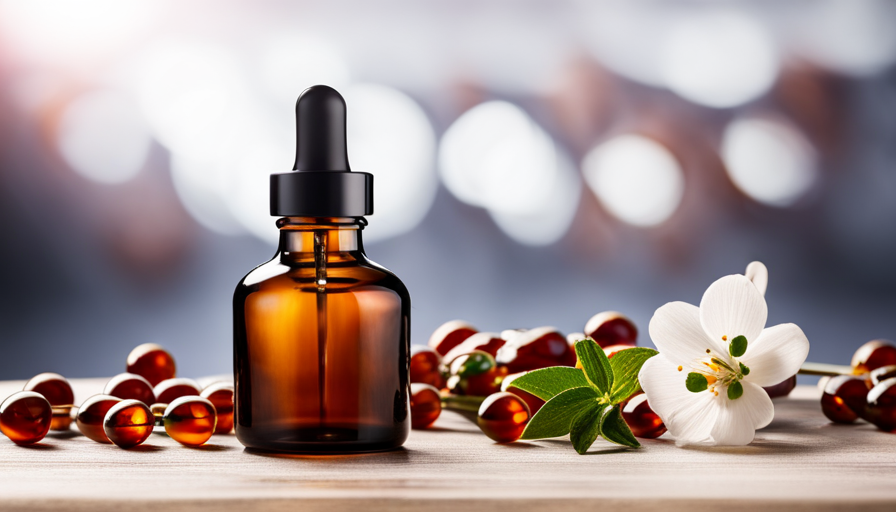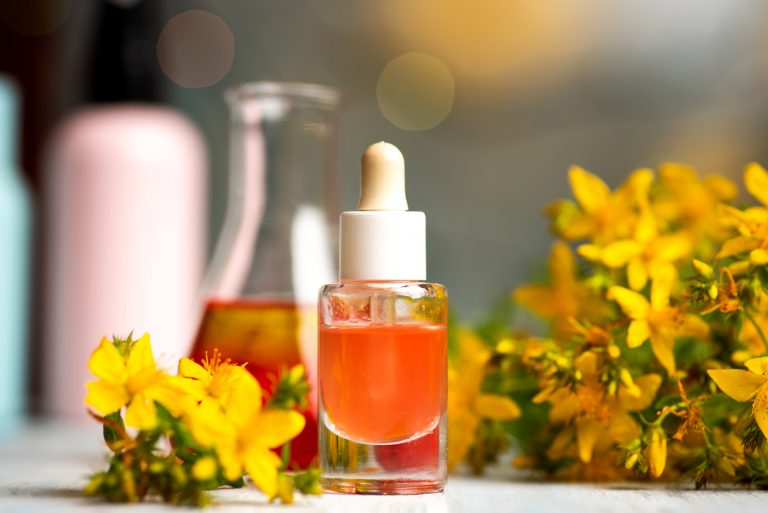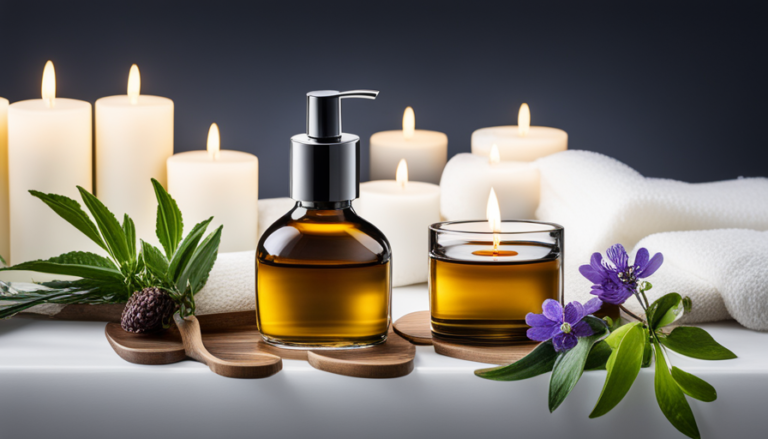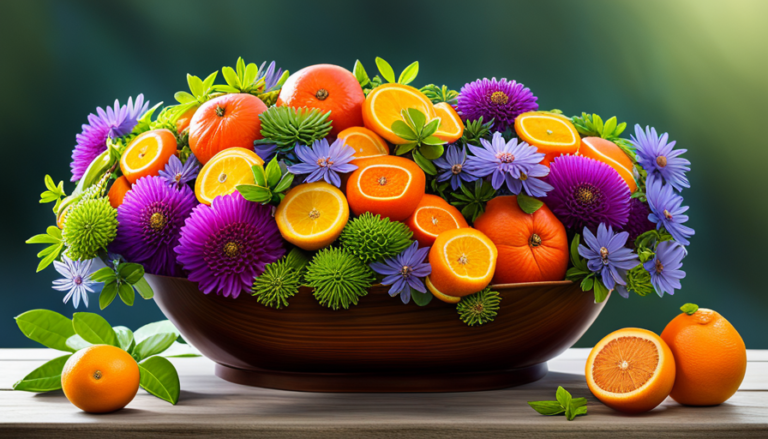How Many Drops In 10ml Essential Oil

Are you curious to know just how many drops are in a 10ml bottle of essential oil? Well, buckle up because we’re about to spill the beans! They say knowledge is power, and in this case, it’s the key that unlocks the secret behind those tiny droplets of aromatic goodness.
So, without further ado, let’s dive right in!
When it comes to determining drop count, two things reign supreme: concentration and drop size. Concentration refers to how potent an essential oil is, while drop size depends on factors like viscosity and orifice size.
On average, a 10ml bottle contains around 200-250 drops of essential oil. However, this can vary depending on several factors such as the specific oil and brand.
But hold your horses! Before you start counting away like a pro, there are a few things you need to keep in mind. Factors like temperature, humidity, and even personal technique can affect drop count. To ensure accurate measurements every time, follow these tips: use a calibrated dropper or pipette for precision and always store your oils properly.
Now that you’ve got the lowdown on essential oil drops in a 10ml bottle let’s get started on your aromatic journey!
Key Takeaways
- A 10ml bottle of essential oil contains around 200-250 drops on average.
- Factors like temperature, humidity, and personal technique can affect drop count.
- The number of drops in 10ml can vary depending on viscosity and dropper size.
- Tips for measuring drop size accurately include using a dropper with clear markings and holding it vertically.
Understanding Essential Oil Concentration
In understanding essential oil concentration, it’s important to know how many drops are in 10ml. Measuring accuracy plays a crucial role in achieving desired results when using essential oils.
To ensure proper dilution, it is essential to follow dilution guidelines recommended by experts in the field. The number of drops in 10ml can vary depending on the viscosity and size of the dropper bottle used, but as a general rule of thumb, there are approximately 200-250 drops in 10ml. This estimation allows for easy calculations when determining the appropriate amount for specific applications.
Moving forward to determining drop size, we can explore ways to measure drops accurately without relying solely on guesswork or assumptions about their size and volume.
Determining Drop Size
You can easily determine the size of drops when using 10ml of essential oil. To ensure drop size accuracy, it’s important to measure the essential oil properly. Here are some tips to help you with this process:
- Use a dropper that has clear markings for accurate measurements.
- Hold the dropper vertically to ensure consistent drop size.
- Squeeze the bulb gently and release it slowly to control the flow of oil.
- Count each drop as it falls into your container.
By following these steps, you can measure your essential oil precisely and achieve consistent results in your recipes or usage.
Now that you understand how to determine drop size accuracy, let’s move on to discussing the average number of drops in a 10ml bottle without losing any valuable product.
Average Number of Drops in a 10ml Bottle
When determining the average number of drops in a 10ml bottle, it’s important to consider the varying drop sizes. Drops can range from small to large, which can affect the overall count. On average, you can expect anywhere between 200-300 drops in a 10ml bottle, but this may vary depending on factors such as viscosity and dropper size.
Varying Drop Sizes
Contrary to popular belief, drop sizes can vary significantly in 10ml of essential oil. This inconsistency in drop size can have an impact on the accuracy of measuring the oil and may lead to variations in usage and effectiveness.
To help you understand this better, here are three key factors that contribute to the varying drop sizes:
-
Viscosity: The thickness or thinness of the essential oil affects how easily it flows out of the dropper, resulting in different drop sizes.
-
Dropper design: The shape and size of the dropper itself can influence the amount of oil released with each drop, leading to inconsistencies.
-
Dispensing technique: The speed at which you squeeze and release the dropper can also affect the size of each drop.
Considering these factors, it’s important to be aware that there isn’t a fixed number of drops in a 10ml bottle. However, understanding these variables will give you a better idea of the approximate range of drops you can expect when using essential oils.
Approximate Range of Drops
To truly appreciate the art of measuring essential oils, it’s essential to understand the approximate range of drops that can be extracted from a 10ml bottle. Drop size variability is a factor that can affect the accuracy of your measurements. Each drop may not be exactly the same size, leading to slight variations in the amount of oil dispensed.
On average, you can expect around 200 to 250 drops in a 10ml bottle. However, this number can vary depending on factors such as viscosity and temperature. Thicker oils tend to have larger drops, while thinner oils have smaller ones. Additionally, colder temperatures can cause oils to thicken and produce larger drops.
Understanding these factors will help you achieve more precise measurements when working with essential oils.
Factors Affecting Drop Count
When it comes to factors that affect the drop count in a 10ml bottle of essential oil, there are three key points to consider. First, the thickness of the essential oil can impact how easily it dispenses from the bottle and ultimately affects the number of drops.
Second, the angle at which you hold the bottle while dispensing can also play a role in determining the drop count.
And finally, the speed at which you squeeze or pour the oil out of the bottle can influence how many drops are released.
By understanding these factors, you can better control and adjust your drop count for more accurate measurements.
Thickness of Essential Oil
Did you know that the thickness of essential oil determines how many drops are in a 10ml bottle? The viscosity measurement of an essential oil refers to its thickness or resistance to flow. This measurement plays a crucial role in determining the number of drops that can be dispensed from a dropper.
A thicker oil will have slower flow and larger drop size, resulting in fewer drops per milliliter. On the other hand, a thinner oil will have faster flow and smaller drop size, allowing for more drops in the same volume. Additionally, dropper design also affects the drop count as some droppers are designed to dispense smaller or larger drops based on the intended use of the oil.
Understanding these factors is important when accurately measuring and dispensing essential oils.
Now let’s explore another factor that affects drop count: the angle and speed of dispensing.
Angle and Speed of Dispensing
Dispensing essential oils at different angles and speeds can make a world of difference in the number of precious drops you get from your bottle. The angle measurement and dispensing techniques play a crucial role in controlling the flow and ensuring accurate dosing.
Here are some key points to consider:
- Tilt the bottle slightly to achieve better control over the oil flow.
- Experiment with different angles to find the one that works best for you.
- Slowly squeeze the dropper, allowing gravity to assist in releasing each drop.
- For a faster dispense, hold the dropper perpendicular to the surface and apply gentle pressure.
- Remember that each oil has its own viscosity, so adjust your technique accordingly.
Mastering these techniques will help you maximize every last drop of your essential oils.
Now let’s move on to some useful tips for measuring and using essential oils effectively.
Tips for Measuring and Using Essential Oils
To ensure accurate measurement and utilization of essential oils, it’s advisable to familiarize yourself with effective techniques.
When it comes to measuring accuracy, using a dropper is the most precise method. Most droppers dispense one drop at a time, making it easier to count and control the amount of oil being used. However, keep in mind that the size of drops can vary depending on factors such as viscosity and temperature. To ensure consistency, it’s recommended to always use the same dropper when measuring essential oils.
Another important aspect to consider is dilution techniques. Essential oils are highly concentrated and can be too potent if used undiluted. It’s crucial to dilute them with carrier oils or other suitable mediums before applying them topically or using them for aromatherapy purposes. The general guideline for dilution is 1% – 5% concentration of essential oil in the final product.
By following these tips for measuring accuracy and proper dilution techniques, you can confidently incorporate essential oils into your daily routine while ensuring their safe and effective use.






